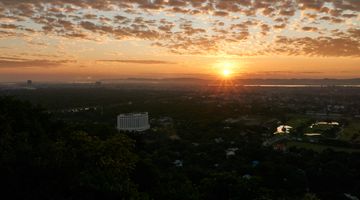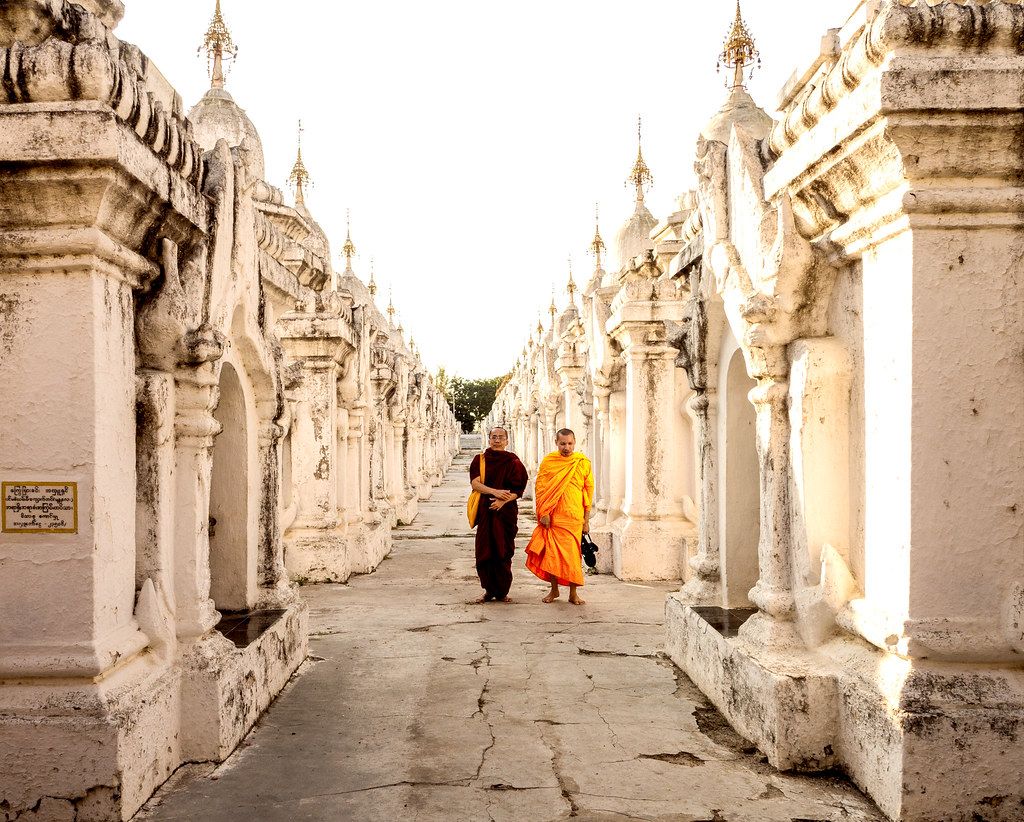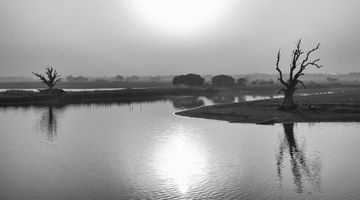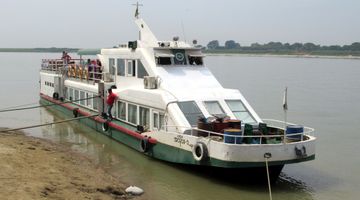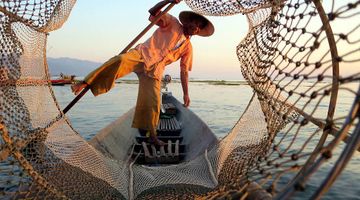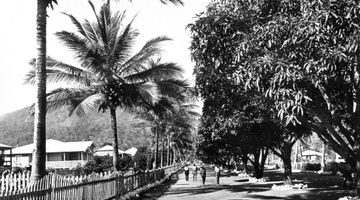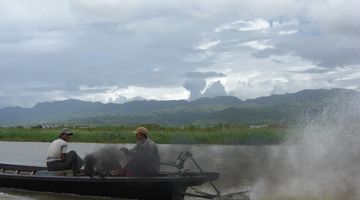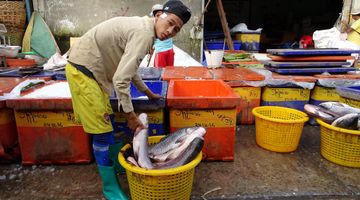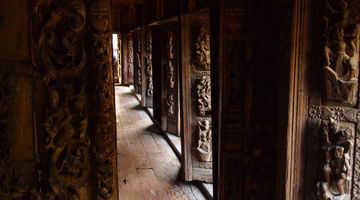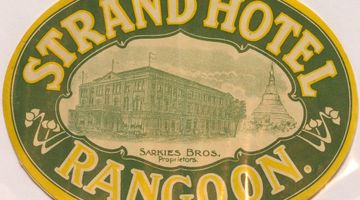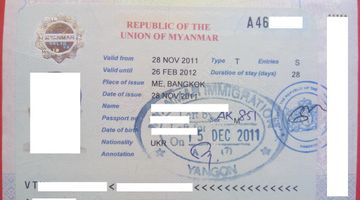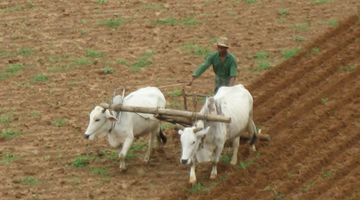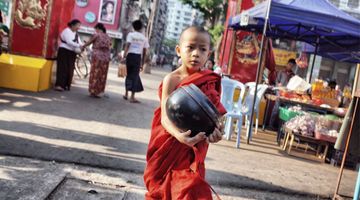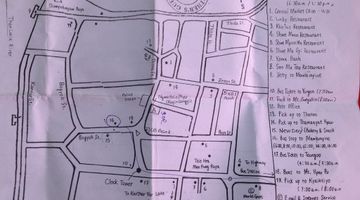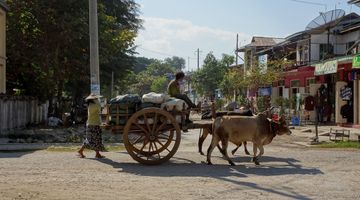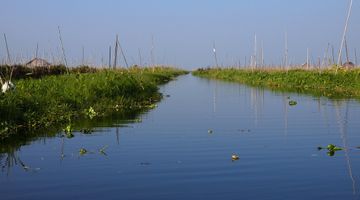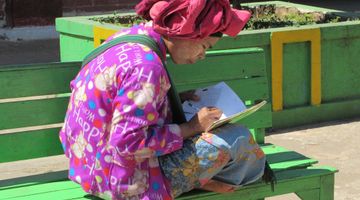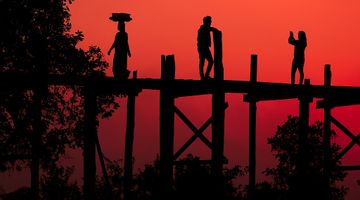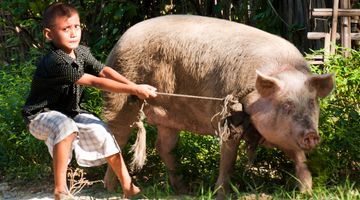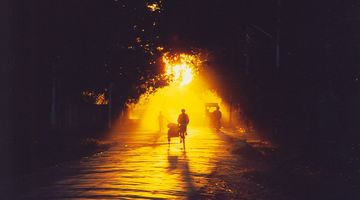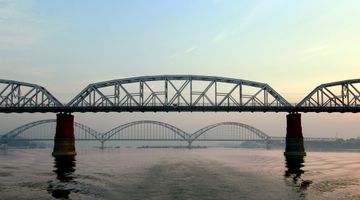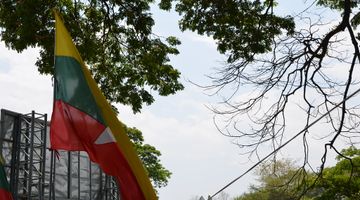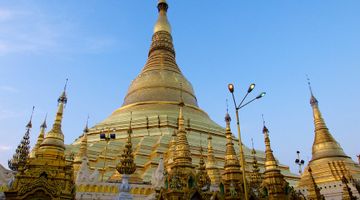Mandalay Myanmar – The Ultimate Travel Guide
About
Located in the north of Myanmar alongside the Irrawaddy River, Mandalay is a lively, bustling city second only in size to Yangon. Famous for its history as a royal city and the seat of power in the country until the beginning of colonial rule in 1885, its most distinctive landmark is the Royal Palace complex surrounded by an impressive moat.
Sadly, extensive bombing in World War II means that much of the palace has had to be reconstructed although it is said to be an accurate replica of the original. Upon the end of the war and the beginning of Burmese independence in 1948, Mandalay retained its important economic position, although as the country’s political and economic landscape grew more turbulent throughout the 20th century, its infrastructure suffered greatly. Today, the city is working hard to recover from this with the development of both the tourism industry and an increase in focus on the area as a trading hub in the north to rival Yangon in the south.
Why go
Nestled at the base of Mandalay Hill you’ll find that, despite its romantic reputation as an ancient capital, it’s still a busy and chaotic city with much in common with Yangon when it comes to lively street vendors and traffic filled highways. It’s a popular destination with travellers, who come here to see the many cultural and historical sights, some of them dot the environs of the city and make for a great day trip, the famous U Bein bridge in Amarapura or the monumental stupa in the town of Mingun, 40 km from Mandalay, being among the most prominent destinations.
There’s plenty to do and see in the city, and most visitors tend to spend several days exploring both the historical sights in the city centre, as well as taking time to make day trips to visit places outside the immediate urban centre. Like [Bagan](/en/myanmar/bagan] and Inle, you’ll need to purchase a ticket to access most of the sights in the archaeological zone – it costs MMK5000 and is valid for 5 days. Some of the most popular attractions for travellers include:
City Palace – a faithful reconstruction of the original, this includes impressive halls and the throne room where the Lion throne would have been located. Be sure to climb the watchtower for great panoramic views of the complex and surrounding city.
Kuthodaw Pagoda – home of the world’s largest book, inscribed on 729 marble slabs that are housed individually in small white stone structures. The pagoda also contains a gilded 57m tall stupa.
She In Bin Kyaung – one of the most impressive buildings in Mandalay, this is an intricately carved teak monastery that is currently undergoing painstaking renovations supported by the US government. A unique and visually impressive structure it’s a must see.
••Mandalay Hill** – a shared taxi can be taken to the summit for around MMK1000 per person to save walking to the top in the heat of the city. The Sutaungpyei Pagoda is located at the top.
Weather
The best time to visit Mandalay, as with the rest of Myanmar, is in the dry season that runs from November to February. Whilst the temperatures can grow exceedingly hot at times and it can be dry and dusty, they tend to hover around 30 degrees Celsius, so not too uncomfortable for exploring the city.
In monsoon season, from June to October, the temperature soar to over 35 degrees on average and the rain can make travelling difficult. Whilst April is out of season, some travellers choose to visit as it’s at this time that the Myanmar New Year is celebrated, with many festivities taking place and giving an insight into local culture and traditions.
Getting in and out
It’s both easy to reach Mandalay, and easy to travel round when spending time there, due to its grid system. We arrived by boat from Bagan, a pleasant day cruise up the Irrawaddy river helps to give an insight into the importance of this waterway which is a key part of Mandalay’s trading operations. It’s also a relaxing and peaceful way to spend a day travelling.
By bus it takes around 9 hours from Yangon, 7 hours from Inle Lake, 5 hours from Bagan and the buses are generally comfortable and inexpensive, with the roads by no means perfect but not in terrible condition.
Mandalay also has an international airport – we met many travellers on a more flexible budget but a tight timescale getting around Myanmar by air. Over 11 flights per day link the city with Yangon, and the airport is considered by many to be the most modern in the country.
Getting around
The main form of transport in Mandalay is taxis – and these consist of shared rickshaws, motorbike taxis and standard cars. There are far more motorbike taxis than in Yangon and far less cars and taxis are more expensive although still an affordable and convenient way to get around the city.
We found most taxi drivers spoke good English and many double as tour guides, often offering their services either for a full day or the duration of your trip which can be a helpful way to get around.
Whilst some landmarks are situated in close proximity, the city is rather a sprawl and walking distances can be too far to be comfortable in many instances, making taxi transportation the best option.
Accommodation
Whilst transportation can be a little more expensive than other places, the continued development of hotels and tourist infrastructure made it easy to find affordable accommodation and food. Hotels and guesthouses abound, and we experienced exceptionally friendly service, a large clean double room and a delicious buffet breakfast for just USD20 per night – significantly cheaper than traveller hotspots like Bagan and Inle Lake where similar would set you back around double the cost.
There are an increasing number of hostels available in the city with prices from just USD8-USD10 per night, making it an affordable destination for solo travellers.
Food
As with Yangon, traditional food in local restaurants is the best option for tighter budgets – popular dining options include BBQ restaurants where you choose a selection of meat and vegetables cooked on skewers, as well as dishes like Shan noodles and tea leaf salad. With a large Chinese population in the city, there’s also a great range of Chinese cuisine on offer at low prices.
